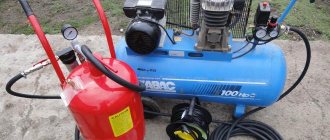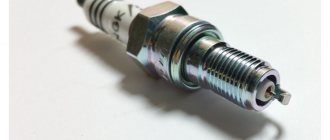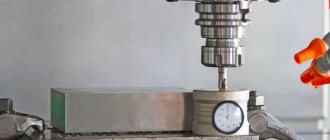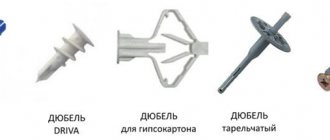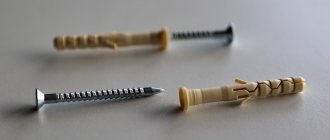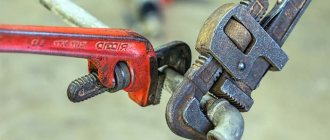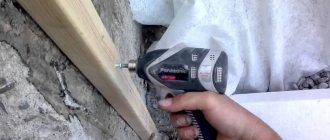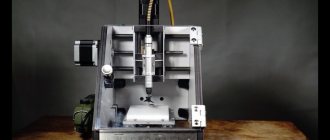The question of which sand is best to choose for sandblasting has been relevant for many years. This technology, which not only cleans surfaces of old coatings and various contaminants, but also prepares them for further processing, was developed and began to be introduced into industry back in the 19th century.
Product before and after sandblasting
If we talk about the sandblasting technology itself, its essence lies in the fact that, using a pneumatic apparatus, a jet of abrasive mixture is applied to the surface to be cleaned, the speed of which can range from 300 to 800 km/h. The use of such a treatment, for which until recently only sand was used, makes it possible to effectively clean not only metal surfaces, but also structures made of other materials.
Abrasive Differences
An abrasive is a hard material with a rough surface used for abrading and polishing various substrates. Most abrasives come in fine powder form, but some include larger particles with sharp edges. Despite the existence of different types of abrasives, they are all characterized by a common property: they have sufficient hardness, therefore they are able to clean metal surfaces, concrete slabs and other materials from contamination.
When used in a sandblaster, abrasive particles are blown outward by a powerful air stream. The device gives them greater kinetic energy, as a result of which the existing plaque is quickly cleaned off. All abrasives are divided into:
- natural (sand, corundum, spar, diamond, chalk, iron ore, etc.);
- synthetic (couproslag, borazone, boron carbide, etc.).
They differ in origin and composition, degree of hardness, mechanical and chemical resistance. The most popular and inexpensive is quartz sand for sandblasting. Before going on sale, sand goes through several stages of processing, otherwise it can damage equipment. Abrasives also differ in particle size: for example, for delicate or damaged substrates, you need to choose the most gentle materials.
Hardness
All abrasives based on hardness - the ability to resist pressing other material into them - are divided into:
- superhard;
- hard;
- soft.
Even soft materials can remove dirt, but are more gentle. The hardness index is established according to the developed Mohs mineralogical scale, dividing abrasives into 10 classes. This division implies an increase in hardness as the class increases (the softest - talc - has class 1, the hardest - diamond - class 10).
Fraction
Abrasive materials for grinding surfaces differ in grain size (fineness), depending on which they are assigned certain numbers:
- fine micropowders (M10–M5);
- micropowders (M63–M14);
- grinding powders (12–3);
- grinding grain (200–15).
In other words, according to their fraction, abrasives are divided into coarse (coarse), medium, fine and extra fine. To produce them, the base material is crushed by a press, resulting in the formation of crumbs. It is sifted through special sieves and separated into powder with different grain sizes, individual crystals or fragments. Typically, abrasives of the coarsest fraction are used to clean materials from a thick layer of plaque, and the fine fraction is intended for final polishing.
Abrasive ability
By abrasive ability we mean the time period during which it is possible to clean a certain area of the product. This is the amount of material that can be sanded per unit of time. This property strongly depends on the size, hardness and other physical properties of the crystals. Also, the abrasive ability is determined by the intensity of the breakup of particles into acute-angled elements during grinding.
Mechanical stability
Different types of abrasives differ in their ability to withstand loads without destruction. Mechanical resistance depends on the compressive strength. The latter is detected by applying pressure to a crystal of an abrasive material and measuring the load at the moment of its destruction. For most abrasives, mechanical stability decreases as the ambient temperature increases. The higher the durability rating, the more times the abrasive can be reused.
Chemical resistance
This property reflects the ability of abrasive materials not to change their basic qualities under the influence of aggressive chemicals (acids, solvents, alkalis), as well as water.
Types of abrasives
When selecting sand for a sandblasting gun or another type of abrasive, you need to take into account the basic properties and characteristics of the latter in order to carry out the work with maximum efficiency.
Quartz sand
It is quartz sand that is most in demand on the market for sandblasting and grinding products. It is characterized by a low price, decent quality, and is sold everywhere. Quartz sand is made from white quartz by crushing it into different fractions:
- up to 0.1 mm;
- 0.10–0.4 mm;
- 0.5–1 mm;
- more than 1 mm.
The sand undergoes thorough screening, so larger particles are practically not found in its small fractions, and sandblasting can be done without harm to the product. The material has good durability and abrasive ability, especially considering its availability. Sand will not damage delicate products or non-ferrous metals. Waste quartz sand after sandblasting can be sold as a building material.
A significant disadvantage of sand is the release of a large amount of dust, which enters the worker’s lungs and eyes, which is harmful to his health. With the regular use of sand for such grinding in the absence of personal protective equipment, a deadly disease can develop - silicosis. To avoid such problems, all equipment should be equipped with dust removal systems, and each batch of sand should be used no more than 1-2 times.
Cooper slag and nickel slag
These abrasive materials are obtained by processing slag from nickel and copper production. They are considered reusable, economical and more effective than quartz. The particle strength, hardness and abrasive ability of cooper slag is higher than that of nickel slag. Such materials can be used up to 3 times without the risk of dust.
The use of these abrasives is advisable when cleaning expensive and complex structures, which is associated with the high quality of the result, but also with the price of materials. Cooper slag and nickel slag are capable of cleaning the most durable types of metal and concrete; they do not crush along with plaque due to their high strength.
Metal (technical) shot
This material is small metal balls made from steel or cast iron. Technical shot can be cast, chopped, chipped, with the first having a spherical shape, and the rest being acute. Steel and cast iron shots are used for shot blasting and shot blasting of products that require notching (profiling) or descaling. This purpose is associated with the high strength of the materials and the presence of sharp-angled edges on their particles. After treatment, the metal base will have a high degree of adhesion and adhere perfectly to finishing coatings.
Steel shot is of good quality - it is the hardest, has the highest strength characteristics, can be used several times, and does not cause dust. The increased service life is due to additional heat treatment of the shot during its production. Stainless steel shot is used for processing structures made of the following materials:
- steel;
- zinc;
- titanium;
- aluminum;
- copper;
- bronze;
- brass;
- concrete;
- granite;
- marble.
Corundum
This material is prepared on the basis of aluminum oxide and is considered one of the most durable abrasives. Its particles are in the form of crystals, and their characteristics are close to diamond. The price of the material is high, which is why it is used for processing mainly expensive products. Corundum can be reused many times. It is ideal for decorative sanding and polishing of surfaces.
A variety of corundum is electrocorundum - a super-strong material obtained by adding a number of impurities to aluminum oxide. Its particles are not damaged at all during processing of materials, therefore repeated processing can be carried out a large number of times (after sifting). On the Mohs scale, electrocorundum is only one position inferior to diamond, it is so hard. Its grains have sharp edges and have the unique ability to sharpen themselves.
Garnet sand
Garnet, or garnet sand, is an abrasive of mineral origin, which in terms of technical characteristics is superior to quartz sand, nickel slag, and cooper slag. The material can be used repeatedly, used both for sandblasting and for hydraulic cutting of metal.
How to choose?
The difficulty in choosing a material for processing various surfaces lies in the fact that you need to take only the abrasive that is really needed in a given situation. A blind pursuit of the most durable abrasive is not always appropriate, because this can not only remove dirt from the surface, but also pierce a thin workpiece through or ruin it in other ways.
You need to understand which abrasive to take for work in each individual case, and none of the characteristics of the mass can be ignored when choosing.
Be sure to pay attention to the fraction of the material, which itself affects its properties no less than the chemical composition. It is predictable that for rough processing it is better to use coarse-grained material - then every precise hit will be immediately noticeable in terms of efficiency. The fine fraction is much better suited for fine cleaning - this is the best option if you are afraid of significantly and irreversibly damaging the product itself.
When purchasing an abrasive, do not forget to ask the seller for a certificate. Such a document is useful from all points of view - it not only demonstrates the responsible attitude of the manufacturer and supplier to their work, but also gives a clear idea of what fraction in this batch is the maximum, minimum or average. Moreover, an adequate manufacturer must also indicate the approximate percentage of particles of different sizes in the batch, be it a 25 kg bag or any other container.
When deciding on the fraction, you must also take into account the force of particle emission, because the power of the sandblasting pistol
What parameters should be considered when purchasing sand?
An important condition for purchasing a high-quality abrasive is the possibility of its reuse and a minimum amount of dust in the composition. Due to safety precautions, it is prohibited to use sand without personal protective equipment and special dust extractors, because when it hits the surface, the abrasive will still break into dust. Therefore, if it is not possible to carry out work in accordance with the standards, preference will have to be given to another type of abrasive material.
To select the sand of the right category, you should consider the following recommendations:
- Plaque thickness. The larger it is, the larger the sand fraction should be. A dense, thick layer of rust can only be cleaned using a coarse abrasive - grinding grain.
- Base hardness. The harder the material of the product that needs to be cleaned, the stronger the abrasive should be.
- Purpose of processing. When it is necessary to obtain a smooth surface even without minor defects, choose the finest sand. On the contrary, coarse grains are required to create a network of scratches and enhance adhesion to protective coatings. Typically, sand with a fraction of 0.6–1 mm is used to remove rust, and larger ones are suitable for removing thick bitumen coatings.
- Speed of sandblasting machine. At high speed, the soft abrasive particles will be quickly destroyed and the work efficiency will remain low. Also, at high speeds, using rounded particles will be less effective than those with sharp edges.
Peculiarities
To operate a sandblasting unit, you need an abrasive. It is selected in accordance with the type of surface being treated and the old coating. The use of unsuitable sand can create a lot of problems: poor-quality processing, damage to the workpiece or the device itself. To avoid undesirable consequences, you should buy materials in specialized stores. As a rule, consultants help you choose the most suitable abrasive and explain how to use it correctly. You can find this information yourself. Subsequently, this will help to quickly and efficiently complete the task.
The design and operating principle of sandblasting are simple, which is why some craftsmen make such a device with their own hands Source ad-cd.net
Areas of application of abrasive materials
The area of use of abrasives may vary depending on their type, strength, cost, and fraction. For example, river or quartz sand is most often used to remove paints, rust, and dirt from building facades and metal bases. To polish products made of copper, aluminum and similar materials, use quartz sand with a particle size of 0.1–0.3 mm; to clean metal from stubborn paint, it is better to take a sand fraction of 0.3–0.6 mm.
Old traces of rust, which are difficult to remove chemically, are removed by sandblasting using 0.6–1.6 mm sand or nickel slag or cooper slag. The same abrasives can be used to remove welding scale from metal structures. Technical shot is most often used for cleaning:
- small, medium, heavy casting;
- rolled carbon and stainless steel;
- products subject to painting, electroplating;
- car body parts.
During processing, shot also helps to strengthen torsion shafts, coil springs, and spring leaves. Electrocorundum, corundum is used for cleaning and grinding titanium, alloy steel, and tempered glass.
Wet sieving method
Given the density of construction sand, the mixture can be sifted using only water. During extraction, it is washed using huge installations. It is possible to make a similar small installation at home. But such a device will not allow you to sift out a large volume.
Sifting with water:
- You will need two or three “filter” grids with different cell sizes. The first is with the largest size (about 3-5 mm), the second is up to 2.5 mm, the third is with minimal cells for retaining small grains of sand.
- The filters are inserted into a wooden frame; it is advisable to have small handles for convenience.
- You will need a container in which you can install the grids one above the other. An old bathtub will do.
- We install filters in the container in descending order of cell sizes. Place sand in an even layer on the top. Large rocks and debris will remain here. We pour water over the sand, rinsing and sifting out the composition. The smallest faction will be at the very bottom.
The design can be changed and improved depending on the imagination and technical capabilities of the construction project.
Making abrasives at home
In some cases, you have to prepare your own consumable mixture for sandblasting, for example, in order to save money. Homemade abrasive is well suited for cleaning metal and concrete bases. Typically, gravel or river sand is used as the starting material. The order of work is as follows:
- prepare 2-3 sieves made of fine mesh stretched over a wooden frame;
- sift the sand first to remove debris through a sieve with larger cells, then through smaller ones until the required abrasive fraction is obtained;
- the finished material is dried in a metal container over a fire or in another way;
- sift the sand again through a sieve with the smallest mesh.
Such sand can be poured into a sandblasting gun or device of a different design and used for its intended purpose.
Where can I get sand for sandblasting?
Sand is sold at any hardware store. There is packaged material on sale in bags - regular without division into fractions or already purified and sifted with the particle size indicated on the packaging. Most often, quartz sand is sold in 25 kg bags, its price per package is 250–300 rubles. Purified and fractionated river sand is cheaper (150–180 rubles per 25 kg), while unseeded sand costs between 50–60 rubles per bag. For comparison, the cost of garnet sand is about 700 rubles/25 kg, and electrocorundum is up to 2300 rubles for the same volume.
Prices
Note that most specialized abrasives for sandblasting are packaged in bags for sale. The most common packaging is 25, 50 kg. Large enterprises can purchase wholesale quantities in soft containers with slings with a lifting capacity of 1000 kg. The price of material of slag or natural origin depends on the size of the fraction - medium is usually 5-15% cheaper than large and small.
Order
- 8-499-113-21-11
Consumption of quartz sand during sandblasting
Abrasive consumption varies greatly depending on the specific treatment and is determined by the power of sandblasting, the volume of work, the fraction, the degree of contamination of the base, the size of the nozzle and other parameters. It is advisable to identify the expense indicator at the initial stage in order to calculate the total financial costs for the entire work. The best choice will be an abrasive that will have a minimum cost per unit area.
A good economic effect comes from using sand for sandblasting if its fraction is ideal for a particular type of work, and cleaning is carried out in a special box. The exact consumption may change along with the original data (for example, with different thicknesses of the rust layer on one product), and the calculations will be approximate in any case.
An example of calculating abrasive for metal processing per 1 square meter
To understand which abrasive is best suited for processing, it is worth considering the average consumption of the most popular materials when cleaning metal to a degree of Sa 2½:
| Abrasive name | Consumption, kg/sq. m |
| Quartz sand | 60–110 |
| Nickelslag | 35–80 |
| Cooper slag | 35–80 |
| Garnet | 3–7 |
| Electrocorundum | 3–10 |
| Technical fraction | 5–10 |
On average, 2–3 kg of sand is consumed per minute of processing a metal surface. The consumption of this material can be somewhat reduced by using modern sandblasting machines with a closed processing cycle, as well as vacuum systems for collecting waste abrasive.
When removing old stubborn paint, a thick layer of rust, or stuck dried cement, you will have to spend a lot of time cleaning the already used abrasive, which will have increased dust formation due to accelerated destruction. In such situations, it is worth considering purchasing a different abrasive material with greater hardness.
Main processing rules
You can get a truly high-quality processing result only by selecting good equipment, consumables and components. The abrasive material must be ideally suited for the specific type of work, otherwise the surface will not be cleaned sufficiently or will be scratched.
The higher the performance of the sandblasting compressor, the faster the cleaning will occur, and the greater the efficiency. It is necessary to select installations with hoses of significant diameter to reduce pressure losses. Couplings and connectors must exactly match the diameters of the hoses. You should also pay attention to the quality of the nozzle - the most durable ones are made from boron carbide, however, they cost much higher than others.
Preparation of river sand for sandblasting
As preparation measures, the sand should be thoroughly dried and sifted. It must be completely dry before loading into the sandblaster, otherwise the device may be damaged. The permissible level of humidity is determined by squeezing the material with your hand - it should flow freely through your fingers. The sand fraction must ideally match the size of the nozzle, which is achieved by sifting on sieves with cells of the required size.
How to sift sand for sandblasting?
To clean sand at home, you can use improvised means - tulle, gauze, flour sieve, mosquito net. The main thing is to sift the abrasive several times so that it is of high quality, uniform in particle size and does not include foreign impurities.
How to dry sand for sandblasting?
The easiest way to dry the sand is in a special drum dryer. The installation has a convenient drying chamber and a built-in sieve, so the time and effort required to prepare the abrasive will be minimal. If such a device is not available, you can dry the sand over the flame of a fire. To do this, a sheet of metal, an iron box, or another metal container is fixed above the fire, where the sand will be located. Some craftsmen dry the material using a heat gun, scattering it on film. This is convenient and easy to do, and the quality of the finished abrasive will be at a decent level.
Sifting from stones
If for a concrete composition it is only necessary to free the sand mixture from large and medium-sized stones, the bed base mesh already mentioned above is suitable. Read about making cinder blocks at home at this link.
Another way is to use a filter on a concrete mixer. Large volumes are mixed mechanically.
The filter for a bucket or concrete mixer is made of a mesh with 3-4 mm cells. It must be fixed to the surface. This can be done using strips of tin, a wooden frame, and flexible clamps. As a homemade sieve, you can use an ordinary household basin with a cut out bottom. A mesh is attached to the bottom. The basin is selected according to the diameter of the filling hole of the concrete mixer, the basin is inserted and sifted. Read about wood concrete blocks with cladding in this article.
When working with a concrete mixer with a homemade filter installed, you should be especially careful and do not remove the element until the equipment has completely stopped and turned off. It must be located away from the operating unit.
